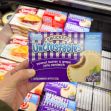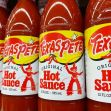A federal jury in Illinois has ordered Campbell Soup Company to pay $17 million to the inventor of patented gravity-fed display racks used to hold and dispense canned soup in grocery stores. The verdict, reached on October 17 in the U.S. District Court for the Northern District of Illinois, found that Campbell and its supplier, Trinity Manufacturing LLC, infringed the plaintiff’s rack design. Trinity was separately ordered to pay $398,564.
The lawsuit accused Campbell and its partners of using display systems that copied Gamon Plus Inc.’s gravity-feed rack, a storage and dispensing design that relies on slanted rails to move cans forward automatically as others are removed. These racks, commonly seen in grocery aisles, keep products visible and within reach for shoppers.
Gamon filed the case in 2015 after Campbell stopped buying its racks following years of business together and began using a competing version made by Trinity Manufacturing. According to court filings, Gamon had sold more than $31 million worth of display racks to Campbell between 2000 and 2007 before the companies ended their arrangement.
The patents at the center of the dispute describe the design and mechanics of these gravity-fed display systems. Gamon alleged that Campbell’s in-store soup dispensers, branded as the “IQ Maximizer,” used those same patented design features without authorization.
In January 2025, U.S. District Judge Georgia N. Alexakis granted partial summary judgment in Gamon’s favor, ruling that Campbell’s racks met every requirement of the patented design. Summary judgment means the court decided certain parts of the case without a trial because the facts were not in dispute. Patent infringement, in this context, refers to one company using or manufacturing a product protected by another company’s patent without permission.
Before trial, Judge Alexakis issued a detailed opinion explaining how damages should be calculated. She excluded testimony from Gamon’s expert, who had based his damages estimate on Campbell’s total soup sales, finding that the calculation must focus instead on rack sales. The court reasoned that the patent applied only to the rack structure, not to the soup cans it displayed.
The judge also rejected Gamon’s argument that the racks and soup cans functioned as a single patented unit, noting that the rack could display any cylindrical product, not just soup. Campbell’s expert, who calculated damages based on the market value and licensing potential of the racks, was permitted to testify.
The case followed an earlier review by the U.S. Patent Trial and Appeal Board and the U.S. Court of Appeals for the Federal Circuit. In 2018, the Patent Board upheld key portions of Gamon’s patents, clearing the way for the infringement claims to move forward.
The jury’s verdict finalized a decade of legal disputes between Gamon and Campbell, establishing financial damages and confirming infringement of the patented display rack design.






